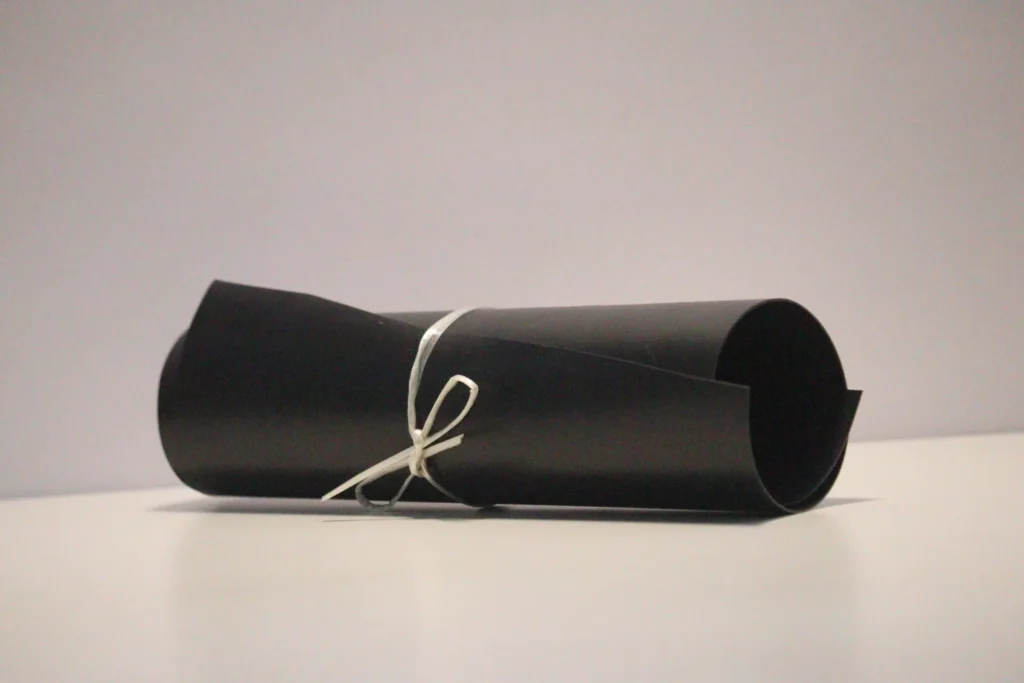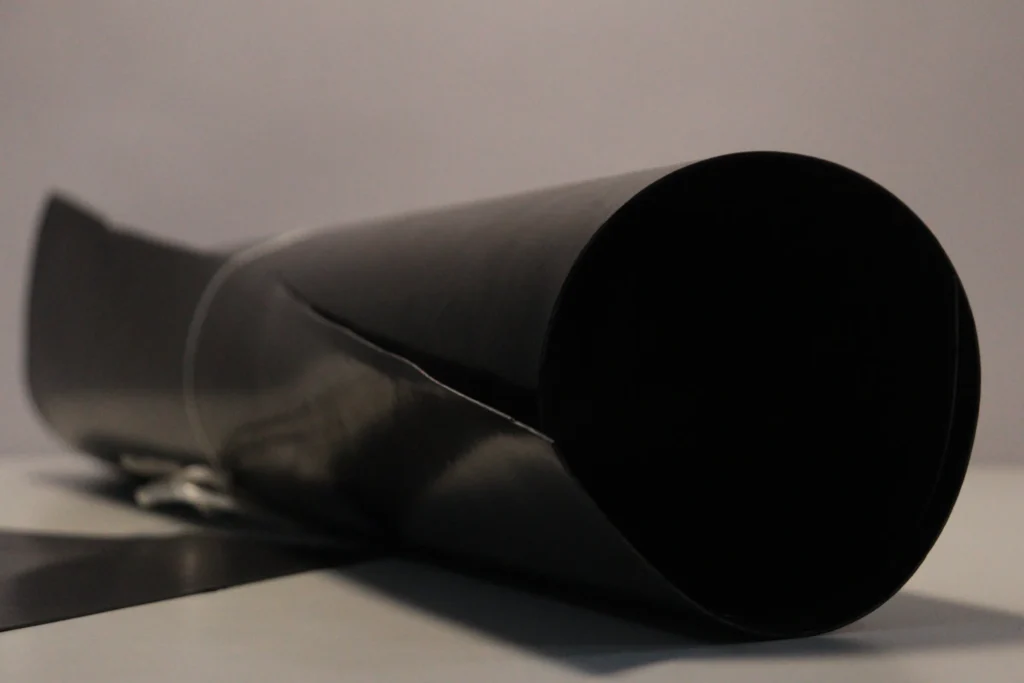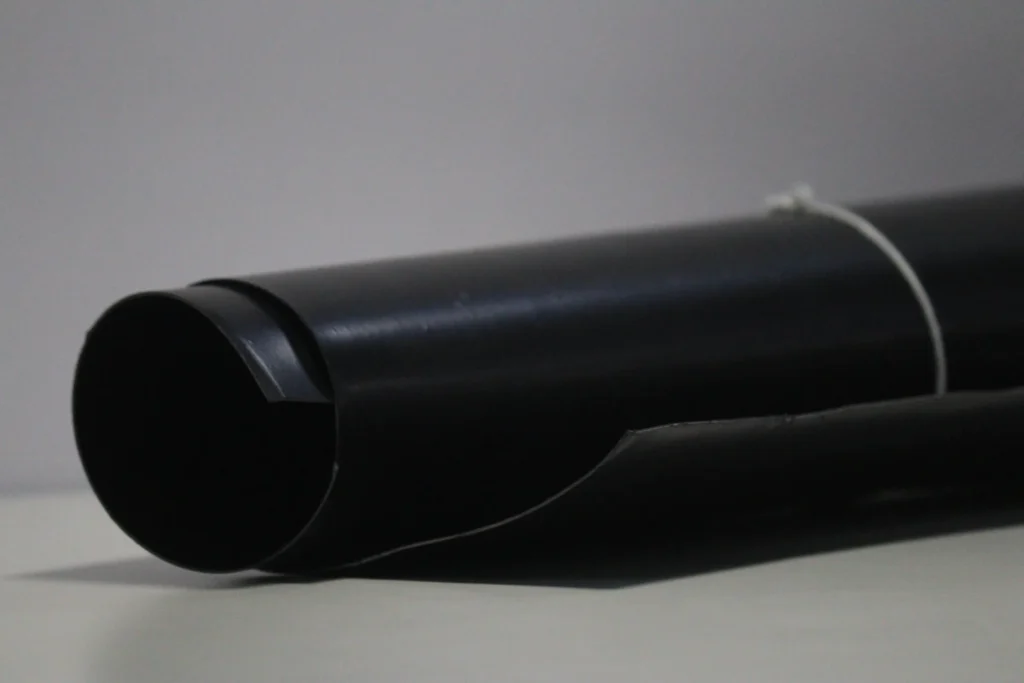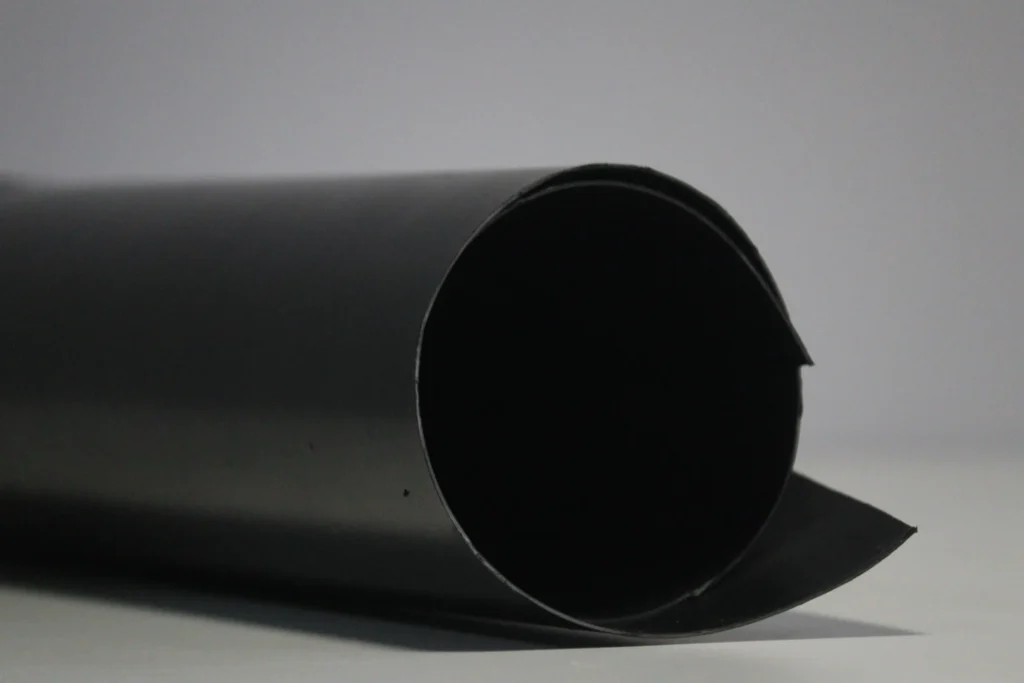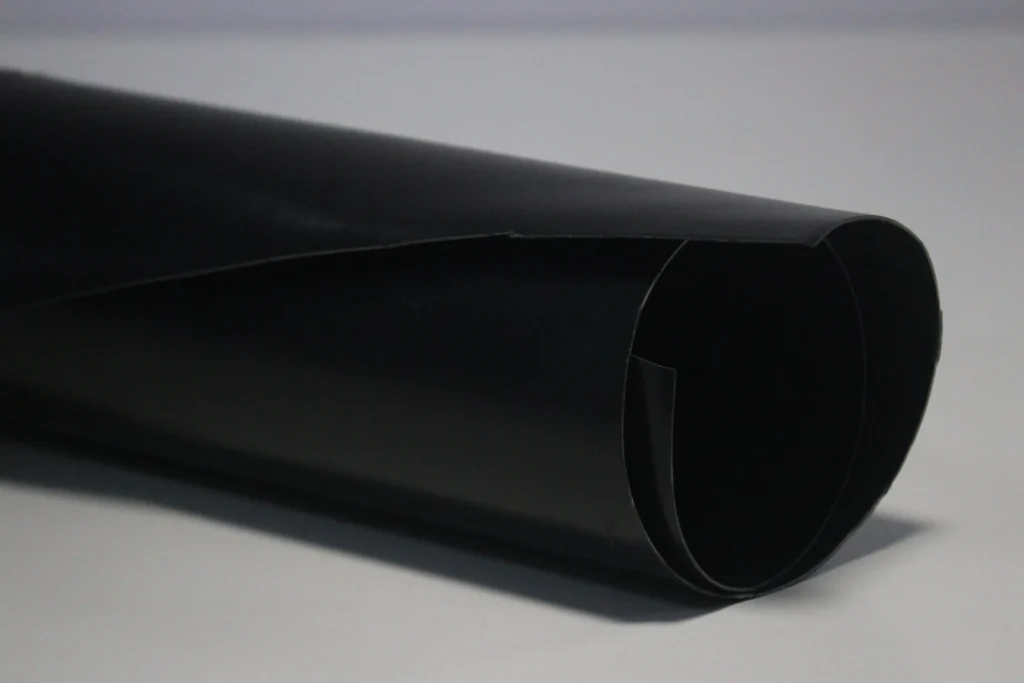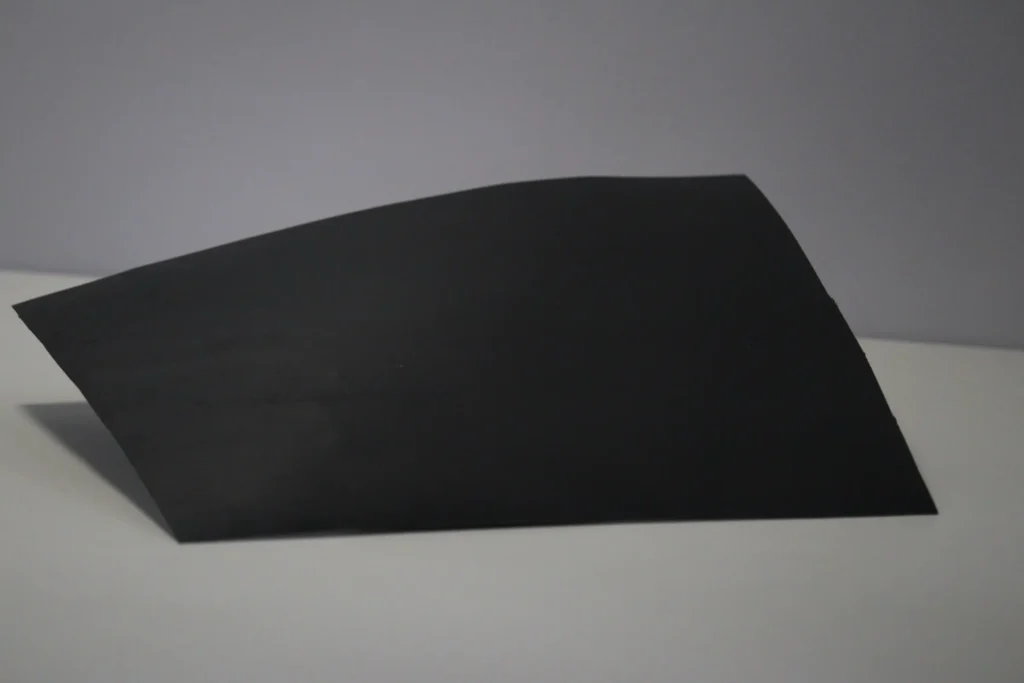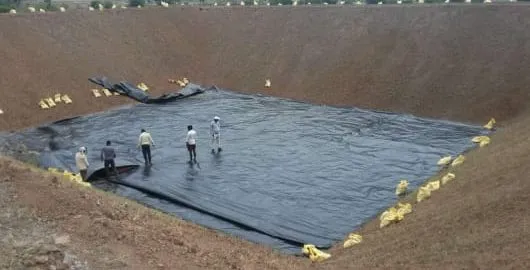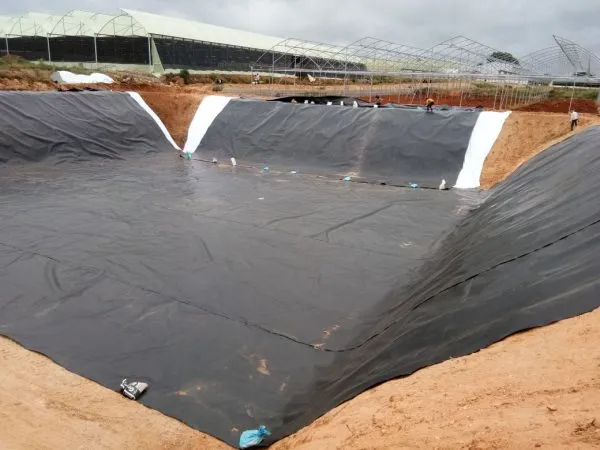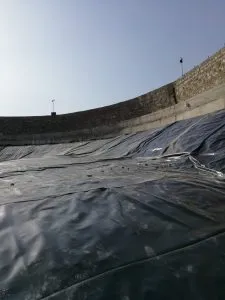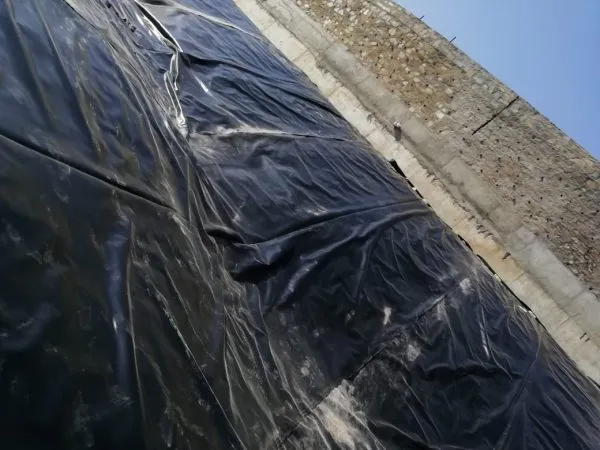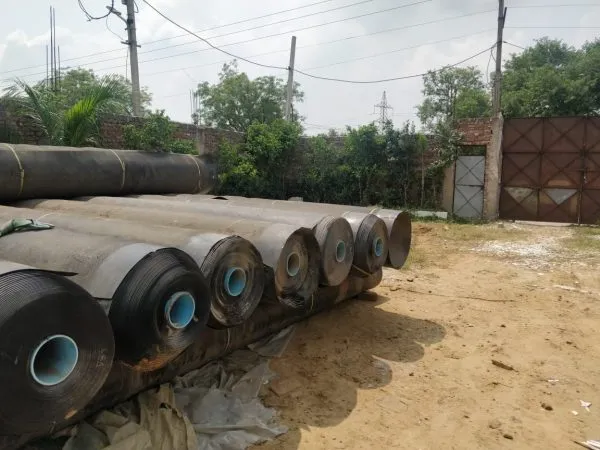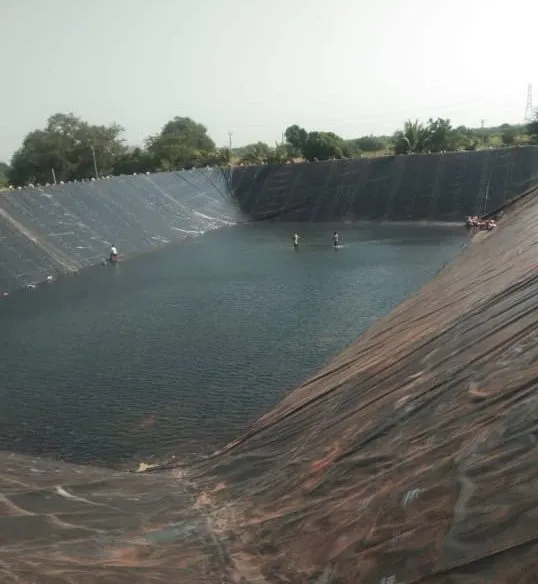Geomembrane
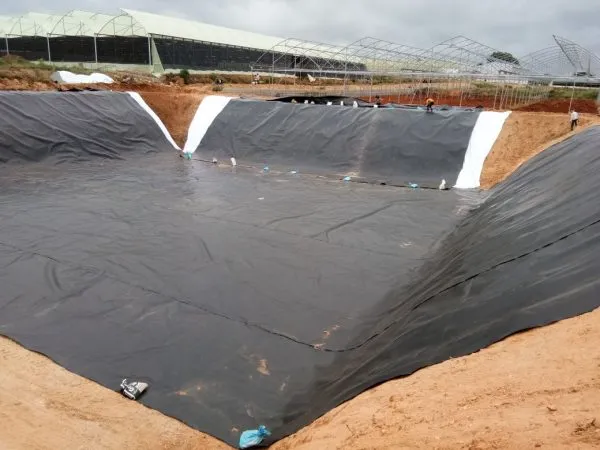
Ocean Global, established in 1998 in New Delhi, stands as India’s premier provider of environmentally conscious engineering solutions. Renowned for pioneering geosynthetic and engineering breakthroughs, Ocean Global tackles diverse soil-related challenges encountered in construction projects.
Ocean Global specializes in the development of cutting-edge and eco-friendly geosynthetic membranes, commonly referred to as geomembranes, designed to excel even in the harshest conditions. Geomembranes play a vital role in containing hazardous waste, reinforcing soil structures, safeguarding landfills, facilitating water storage, and preventing liquid pollution.
As an India-based company, Ocean Global manufactures highly flexible HDPE geomembranes that offer ease of handling, remarkable durability, and most importantly, aquatic safety. Their impermeable geomembranes not only meet but also exceed the most stringent requirements for containing liquids. With an extended lifespan, their high-performance geomembrane coverings effectively withstand challenges posed by UV radiation, oxidation, and other adverse weather conditions, ensuring reliable waterproofing solutions.
What is Geomembrane?
A geomembrane is a synthetic membrane liner or barrier with a very low permeability that is used in conjunction with any geotechnical engineering material to regulate fluid (or gas) migration in a human-made project, structure, or system. HDPE Geomembranes can be impregnated with asphalt, elastomer, or polymer sprays, or as multilayered bitumen geocomposites. By far the most prevalent are continuous polymer sheet geomembranes. Ocean Global manufactures sustainable and innovative geosynthetic membranes or geomembranes that excel in performance under some very strenuous conditions.
Properties of Geomembrane
Physical properties of Geomembrane
The following are the primary physical features of geomembranes in their unprocessed state:
- Measurement of the thickness (smooth sheet, textured, asperity height)
- Density
- Indicator of melted flow
- Per unit of area, mass (weight)
Mechanical properties of Geomembrane
To measure the strength of polymeric sheet materials, a variety of mechanical tests have been established. Many have been adopted for use in geomembrane evaluation. They are index versus performance tests, and they reflect both quality control and design.
- Elongation and tensile strength (index, wide width, axisymmetric, and seams)
- Tear resistance
- Impact resistance
- Puncture resistance
- Interface shear strength
- Anchorage strength
Some salient features of the HDPE Geomembranes are
- High mechanical strength
- Chemical stability
- Puncture resistance
- High impervious coefficient
- Fast construction speed
- Aging resistance
- Environmental friendly
- Low cost
- Good weather resistance
- A long service life.
Functions of Geomembranes
The primary purpose of geomembranes is, containment of hazardous wastes, stabilize earth, secure landfills, store water and in the prevention of liquid contamination.
At Ocean Global, India, we manufacture highly flexible High-Density Polyethylene geomembranes that are easy to work with, have a long-lasting life, and, most importantly, are aquatic safe.
Our waterproof geomembranes meet and exceed the critical challenges of liquid containment. Our Geomembrane covers are durable and highperformance membranes.
The waterproof geomembranes are highly resistant to ultraviolet light, oxidation, and other weather effects.
Geomembrane for Multiple Project Applications
Geomembrane for Landfill
Due to their capacity to easily handle differential settling in the trash pile, geomembranes are suited for use in landfill caps, landfill coverings, landfill liners, temporary landfill closures, and more. PVC is the best environmental liner for these applications because of its high elongation and durability. To prevent rainfall leakage, they were first used as bottom liners for municipal garbage containment and landfill closures.
Geomembrane is an excellent geomembrane cover material for use in the following applications. They are used for landfill disposal facilities for municipal solid waste (MSW) and yard garbage (in numerous states), landfill disposal sites for low-hazard industrial waste, C&D construction and demolition waste debris, and other non-hazardous industrial trash, closure of the coal ash basin.
Geomembrane for Caps and Closures
Due to differential settlement and periodic gas pressure building from beneath, permanent geomembrane covers are subjected to a large level of strain in all directions. Caps are frequently used to cover sloped regions and are designed to hold a layer of other geosynthetics and soil above them for an extended period of time. In general, geomembrane covers are used to protect materials from water penetration and to reduce material loss due to wind or water erosion. Covers can also help to keep odors at bay.
Soil rehabilitation initiatives, temporary stockpile covers, and erosion protection on slopes in active construction sites are all examples of short-term cover applications. Covers or caps for landfill closures are examples of long-term applications. Another use is to increase the life of the roofs of above-ground storage tanks.
Geomembrane for Pond Liner
Pond liners provide a variety of benefits, but not all of them are created equal. Even the same-material liners can function differently. The Geosynthetic Institute is responsible for developing test techniques, standards of practice, and product specifications for geosynthetics such as HDPE liner production, design, and installation.
Pond liners are robust and flexible, with excellent chemical and corrosion resistance. They are among the most long-lasting and robust polyethylene liners available. They can be fusion welded together in the field to make permanent sealing. To ensure a flawless installation, fusion welding requires an expert welder and accompanying equipment. Both fish and vegetation are safe in pond liners. Overall, liners are inexpensive and have one of the longest service lives of any polyethylene liners.
Geomembrane for Mining
The HDPE geomembrane liner serves as a separation barrier and is also the most significant component in heap leaching in this application. Chemical assault, point loads from normally high heap loading conditions, site-specific terrain, site-specific climate conditions, and site-specific building conditions must all be considered while designing the geomembrane. Geomembrane is a cost-effective composite liner system alternative, especially if on-site clay sources are insufficient.
A bentonite (water-absorbing material) layer is sandwiched between two nonwoven geotextile layers in GCL. A 10 mm thick GCL will often operate similarly to, if not better than, a 30 cm CCL, and may even self-heal. Additional filtration and barrier capabilities are provided by GCL. The nonwoven geotextile protection layer helps disperse loads and provides support for the underlying geomembrane. By keeping small particles and gravel from accessing the geomembrane, the protective layer also aids filtration and drainage.
Geomembrane for Canal Liners
Geomembranes are often used to prevent water from seeping into canals. PVC, HDPE, LDPE, CSPE, and EPDM geomembranes are among the various varieties of geomembranes available for this application. These geomembranes frequently require protection, and there are a variety of choices available, including compacted earth, concrete, or shotcrete. The United States Bureau of Reclamation (USBR) has done a variety of tests on canal-lining systems, including the Deschutes Canal-Lining Demonstration Project, which entails the completion of 34 canal test sections, many of which use geomembranes.
Types of Geomembranes
HDPE Geomembrane
Due to its longevity, good UV resistance, and relatively low material cost, HDPE (High-Density Polyethylene) is the most extensively used geomembrane and is the favored choice for lining projects.
HDPE geomembranes are commonly used in exposed applications such as landfills, reservoir covers, and pond and canal liners. This is due to the material’s low starting cost and great chemical resistance. Higher thicknesses are available, while other geomembrane varieties do not. HDPE geomembranes has a high strength-to-weight ratio and can withstand greater temperatures.
Chemical and UV resistance are two of this geomembrane’s finest features, making it ideal for large-area applications requiring high-quality installation. Furthermore, because HDPE is food-safe, it can be utilized to store drinkable water.
LDPE Geomembrane
LDPE (Low-Density Polyethylene) geomembranes are a versatile and durable solution for a wide range of containment and environmental protection applications. Known for their exceptional flexibility and impressive resistance to punctures, chemicals, and UV exposure, LDPE geomembranes are ideal for projects that demand a resilient yet adaptable liner. These geomembranes are widely used in landfills, ponds, canals, and wastewater treatment facilities, where they provide reliable seepage control and minimize environmental impact. Additionally, LDPE’s flexibility makes it easy to install in challenging terrains and irregular surfaces, ensuring a secure seal. With a balance of strength and adaptability, LDPE geomembranes offer an effective and sustainable choice for long-lasting environmental containment solutions.
LLDPE Geomembrane
In comparison to HDPE, linear low-density polyethylene (LLDPE) geomembranes offer more flexibility, making them more suitable for installers who demand an impermeable geomembrane. It’s made of virgin polyethylene polymers, which make it resistant to low temperatures and UV rays.
LLDPE geomembranes are also designed for long-term use and will last for many years. Industrial applications, such as liquid storage tanks, environmental and animal waste containment, are where it shines.
PVC Liners
Geomembranes constructed of polyvinyl chloride (PVC) are a thermoplastic waterproofing material comprised of vinyl, plasticizers, and stabilizers. Ethylene dichloride is cracked into a vinyl chloride monomer to produce the polyvinyl chloride resin used in PVC geomembranes. The PVC resin is then made by polymerizing it.
It can withstand tears, punctures, and abrasion, making it ideal for keeping contaminants from entering water sources and ensuring safe drinking water. PVC geomembranes are lightweight and flexible, making them ideal for landfill and canal linings, tank linings, soil remediation, and wastewater lagoon liners.
EPDM Liners
EPDM (Ethylene Propylene Diene Monomer) geomembrane is a flexible and long-lasting material that can withstand punctures and harsh weather. It has a rubber-like texture and is UV-stable, as well as being extremely strong. Dams and other irrigation sites commonly use EPDM geomembranes as surface barriers. This sort of geomembrane is extremely simple to install, which is why backyard landscapers employ it. It can be used in agricultural applications such as irrigation ponds, liners, and covers.
RPP Geomembrane
Geomembranes made of Reinforced Polypropylene (RPP) are polyester reinforced liners used for long-term water containment and industrial waste disposal. The material is constructed of a UV-stabilized polypropylene copolymer that provides flexibility, stability, and chemical resistance.
RPP geomembranes are ideal for situations where folds occur as a result of unpredictably changing weather conditions. It is reinforced with nylon scrim to keep it sturdy and long-lasting. Municipal applications, aquaculture and horticulture, evaporation pond liners, and mine tailings are all common uses for this geomembrane type.
TRP Geomembrane
TRP geomembranes are similar to RPP geomembranes, except instead of polyester fabric, they employ polyethylene fabric. This is an excellent choice for lining your temporary ponds.
TRP geomembranes are also a long-lasting soil remediation option. Chemical resistance, limited temperature range, and ultraviolet stability are among its physical features. Canals, industrial tarps, landfills, agricultural, and municipal uses all employ this sort of geomembrane.
Ocean Global in India geomembranes manufacturers that are technically superior, chemical resistant, and offer ease of welding of the strong, reliable seams.
Understand better about HDPE Geomembranes using our insights on Badarpur NTPC Eco Park, Delhi.

